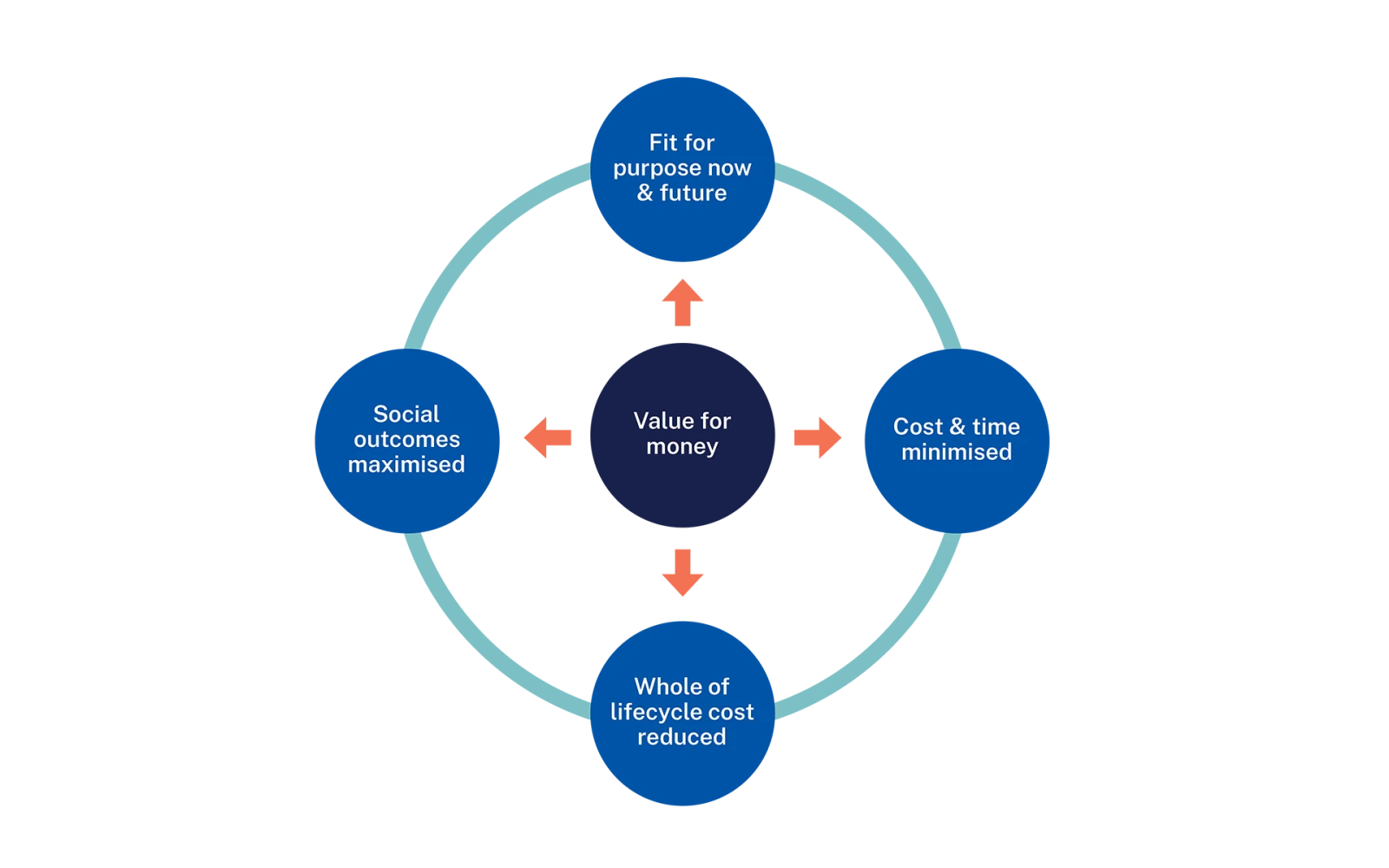Value for money definition
An image to summarise a value-for-money definition in terms of outcomes is as follows:

The image demonstrates that a value-for-money outcome has a dual focus: social and economic.
Social value is the more complex of the two. It is principally about ensuring the facility contributes to high-quality educational outcomes by creating an environment where students thrive and are granted the opportunity to be the best that they can be. It also seeks to ensure that spaces created are both safe and accessible and explores how buildings can be used by the community as a social infrastructure benefit. Social value is maximised when educational and architectural design are highly aligned.
In short, the economic focus seeks to ensure that the building is constructed on time and within budget while also minimising its whole-of-life costs. The outcome is dollars saved, so more funds can be allocated to teaching and learning.
When dual focuses are combined, a value-for-money educational facility is defined as follows:
The construction contract price is competitive with the current construction market, and primary and secondary consultant costs are within established benchmarks.
- Knowledge and continuity of consultants and the construction contractor with the site on which the facility is to be constructed are key considerations in achieving the aforementioned outcome.
- A quantity surveyor is involved throughout the design and construction process.
The building is fit for purpose and remains so throughout its use.
- Fit for purpose means that the use of a facility is aligned with pedagogical practice/ educational philosophy.
- School leaders, teachers and students are involved in the design process.
- It is anticipated that the design and construction of a facility is likely to integrate a level of agility and flexibility to achieve fitness for purpose over the longer term.
- Where possible, agility and flexibility also incorporate a capacity for a facility to be used beyond school hours and school terms.
- Before deciding to construct a new building, can an existing building be reimagined?
Lifecycle costs to maintain and operate the completed facility are minimised.
- School has or develops expertise in managing lifecycle maintenance.
- While the contingent liability on a funded building is 20 years, accounting practice typically ascribes a 30-to-40-year life for each building. Consequently, lifecycle duration should be at least 30 years.
- It is anticipated that design elements incorporating environmental sustainability are important to reducing lifecycle costs.
The finished project enables access to all and is safe and secure.
- Access means design that promotes inclusive experience and access.
Time parameters, established at the strategic definition stage of the project, are met concerning the design, construction, and activation/occupation of the building.
Budget parameters, established at the strategic definition stage of the project, are met, and should value management need to be undertaken through the delivery of the project to achieve budget, it does not negatively impact upon the outcomes stated above.
- School leaders develop or can positively contribute to the design, construction, and activation of new or refurbished buildings.
- It is recognised that the design process should not be rushed or underfunded as the first 15% of a project cost has an influence on 90% of the total project cost.
